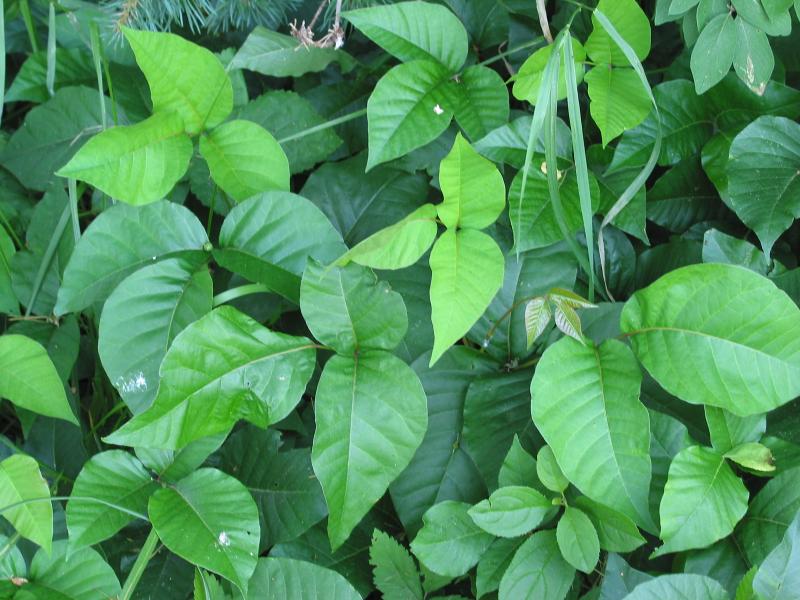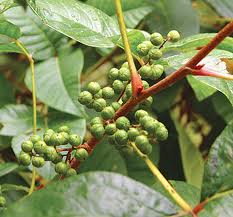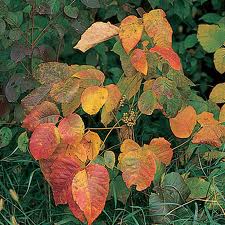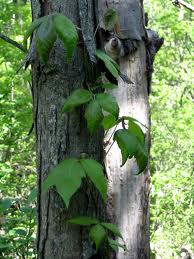I did something this past week I have not done in some twenty years: I got poison ivy.
Given what I do for a living, running around the wild all the time in a state smothered with poison ivy, I suppose two cases 20 years apart is a good record.
It’s a small rash with a big itch, on the front of my right knee. Clearly I kneeled in it. That I didn’t notice is perhaps a professional embarrassment or a statement to my enthusiasm. But I really didn’t get off the beaten path so where I actually got exposed is a tad of a mystery. As for other irritants I’m assaulted by fire ants often, which is why I wear long white socks while teaching. They are my first line of defense against those amazingly painful creatures. And wasps are also in the occupation hazard mix. Fleet of feet helps with those, and avoiding three places where they love to nest: Folded palm fronds, and inside sculpted podocarpus or elaeagnus bushes, occasionally southern cedars as well.
When I knowingly get exposed to poison Ivy I quickly wash — within the minute — with Fels Naptha soap. That has seemed to have worked for the last two decades. Of course the key word is “knowingly….” Fels Naptha is an inexpensive industrial strength laundry soap sold by the bar in most grocery stores, costing somewhere around a dollar per. My mother used it as well. Experts say immediate washing is good, even with just water. You want to remove the offending oil urushiol (you-RUE-she-all) before it penetrates the skin. The woodlore of using Jewelweed juice on skin exposed to poison ivy might stem from the plant’s saponins, a natural soap it contains. The important point to remember is don’t use a soap with oil in it as the oil will just spread the urushiol around making things worse. You want a non-oil soap that breaks surface tension and helps wash the urushiol away, as quickly as possible. I always have my “poison ivy” soap and water with me when in the field.
There’s an amazing amount of misinformation about poison ivy on the Internet, even on medical sites that should do better. While there may indeed be three people among the seven billion of us who are absolutely immune to poison ivy, the 6,999,997 rest of us are not. It is more accurate to say we differ in our resistance and rate of expose. Said another way, nearly everyone will get poison ivy if they are exposed to it long enough, including the 20 percent who are really resistant. For some that is one exposure, for others dozens. The folks who say “I’m immune to poison ivy” are the prime candidates because they are not avoiding it. Over the years I have spoken to many a person who was extremely surprise when they got their first case of poison ivy because they were “immune.” The point is you will get poison ivy at some point if you keep getting exposed to it so the best course of action is to avoid it and keep that day as far away as possible, if ever. Dr. John Kingsbury, who was an expert on toxicology, says the plant cells have to be breeched to release the oil, that just rubbing the plant would not cause a problem. He added, however, that an insect chewing part of a leaf would release the oil so even a small amount of crushed cells can release enough oil to cause a reaction. He was adamant that soap did no good and that the contamination was immediate. Other views have disagree in the 47 years since he wrote his book saying that non-oil soaps, even plan cold water helps if used immediately.
Incidentally, there is little difference between Poison Ivy and “Poison oak.” There’s no agreement whether they one or two species. Best guess is different varieties of the same species. From our point of view it doesn’t matter. It, or they, are bad. In fact there are six related species that can give people rashes or other allergic reactions: Mangoes, cashews, pistachios, poison ivy, poison sumac, and Brazilian pepper.
All that said there are some interesting facts about poison ivy. Only humans, some other primates, and guinea pigs can get it. Your dog and cat can’t. But they can carry the oil, urushiol, on their fur and give it to you, and that oil is active for years. Poison ivy is also a very nutritious food for deer as well as rabbits. Some 60 birds eat the fruit and bees visit the blossoms.
What is fascinating is how poison ivy works. The oil “locks” onto your skin cells, essentially interrupting the chemical signal from the skin to the rest of the body. Thus the area expose is viewed as foreign, so the body attacks it. The result is sores, itching and bleeding. As bad as that is it also has a positive side. Native Americans would put poison ivy sap on warts so the body would get rid of the warts. That’s some interesting thinking. Unfortunately poison ivy can also be systemic. You can get it on your knee and have it crop up on your back. In fact, the only other time I got poison ivy the first blisters appeared in my right elbow. Then they showed up in my left elbow then behind both knees.
What irritates me the most is not my current itching but that I am so good at recognizing it that it managed to get me anyway. There is one other possibility. I’m quite sure I did not come in contact with the plant. However, it did rain and the oil can wash off damaged plants with the water carrying the oil. I could have knelt in that, a more feasible explanation, or at least one my ego likes it.
There is also a controversial side to the plant: Eating poison ivy to confer immunity. No doctor would recommend it nor do I. However, Euell Gibbons, the previous generation’s back-to-nature guy, wrote that he ate some every spring and never had a case of poison ivy there after. I know an herbalist who does the same thing in the spring every year. And I personally have seen one person eat it, again in the spring. There are three theories:
One is they all eat the plant in the spring when perhaps urushiol production is low. Or, two, the mucus that covers our insides protects us and we just digest the oil. A third possibility is it does somehow confer a protection. Kingsbury was firm in his thinking that eating it was very dangerous and that the plant was dangerous all year long. I think I will leave the experimenting to others. I’m not compelled to try it, not sure why… ah pardon me a moment while I scratch my knee…
For me avoiding poison ivy has worked fairly well thus far so no sampling in spring needed though I am pondering switching to long pants, maybe a tight body suit… nawh…






